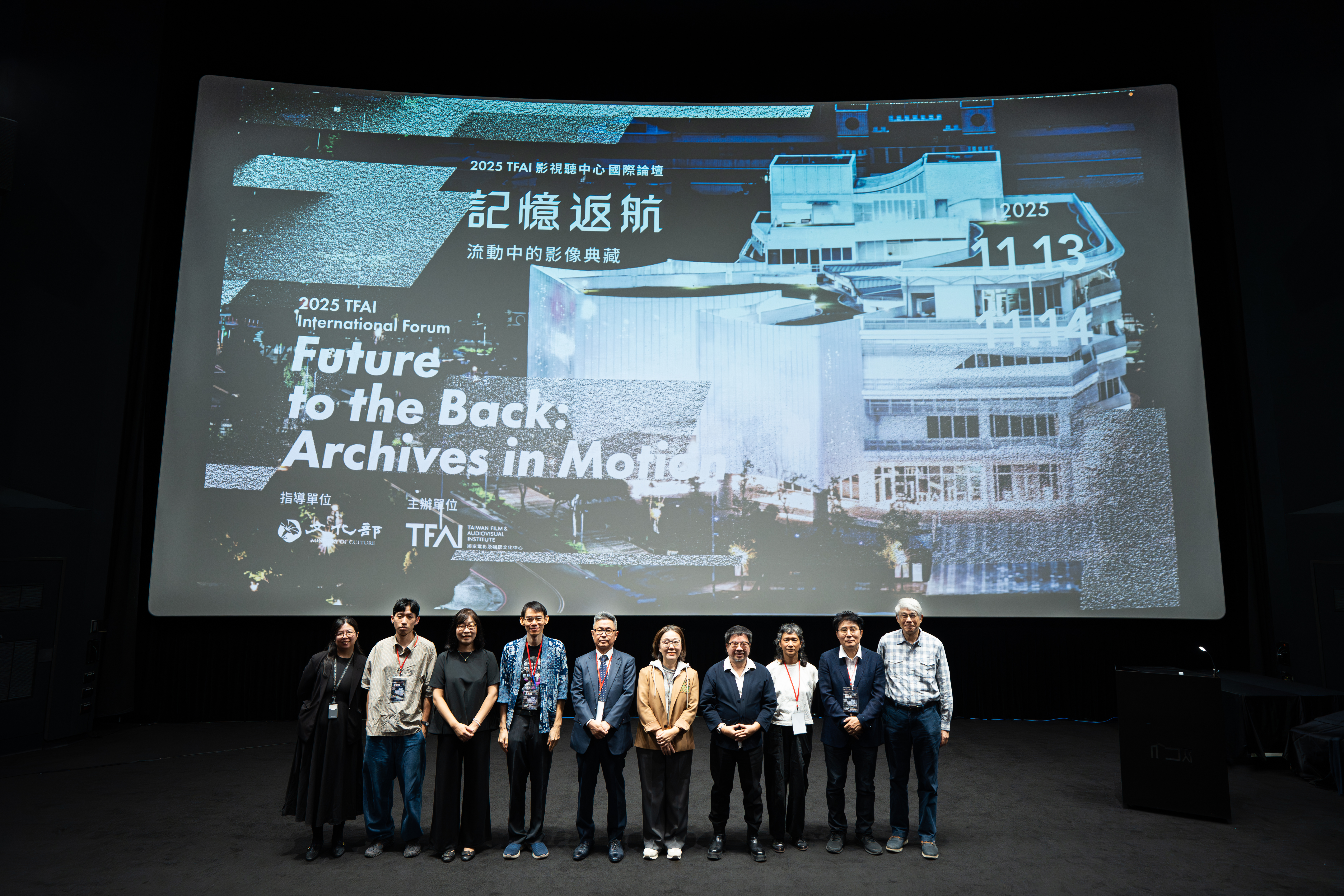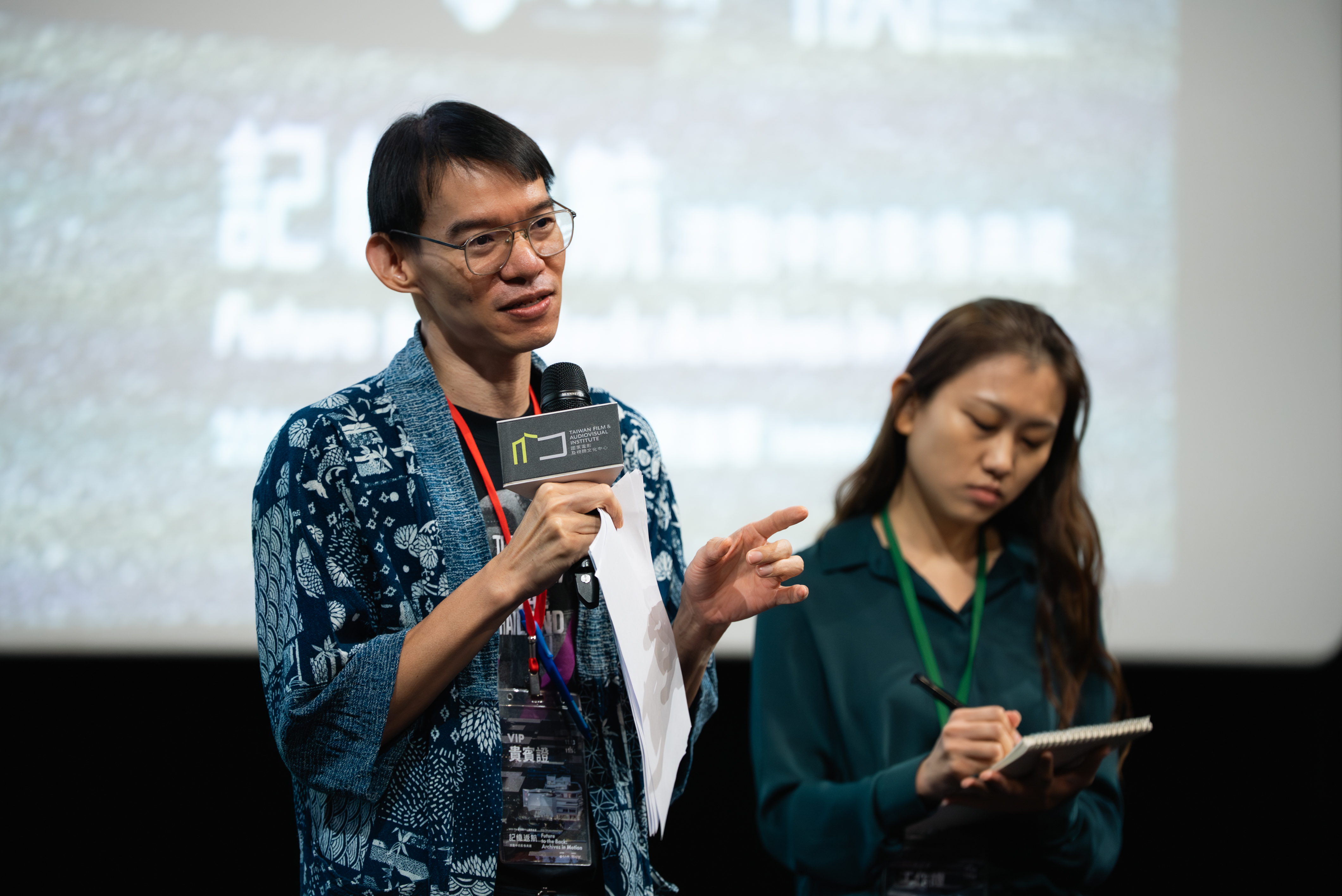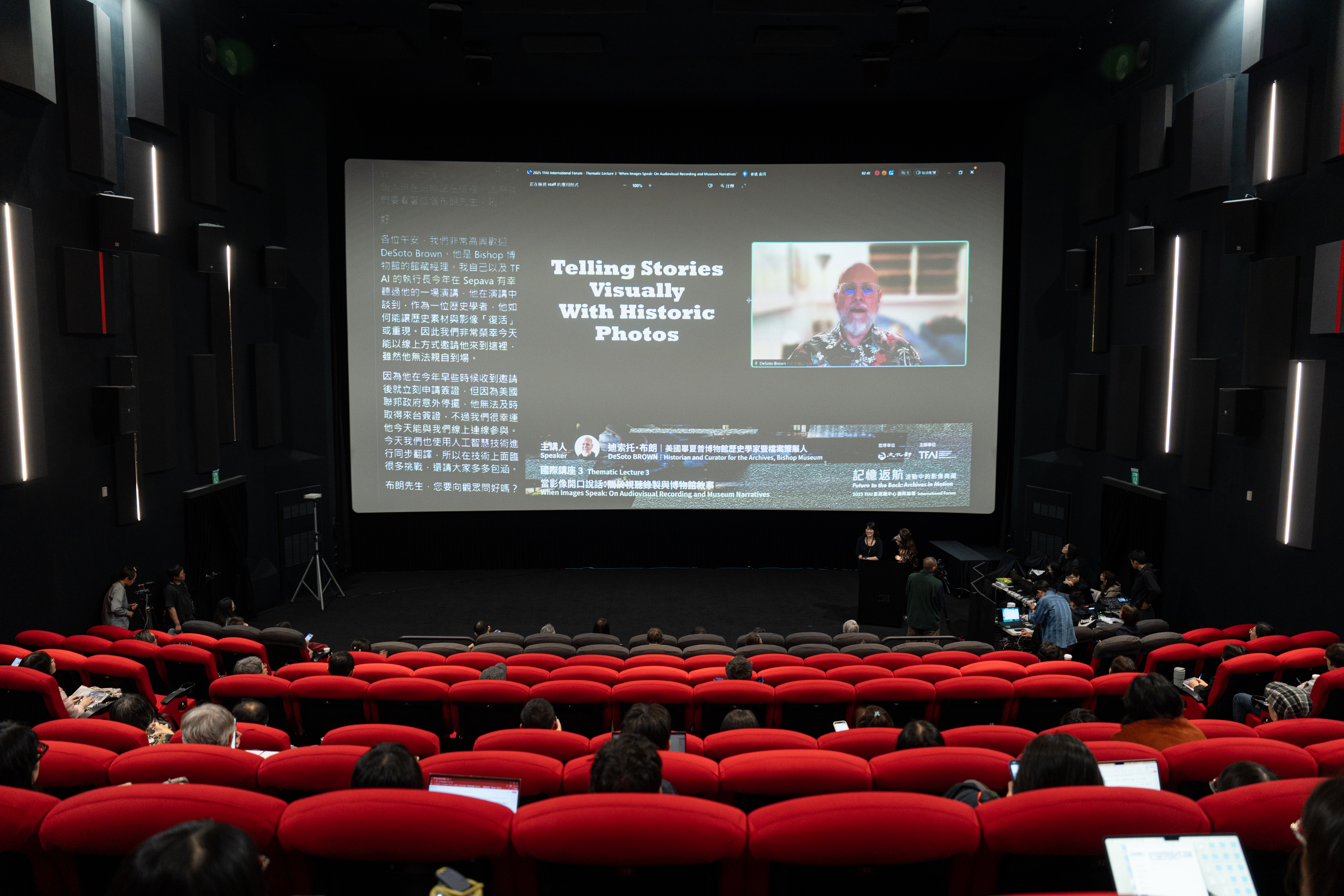
Dedicated to the preservation, restoration, research, promotion, and education of audiovisual heritage, the Taiwan Film and Audiovisual Institute (TFAI) hosts “TFAI International Forum – Future to the Back: Archives in Motion” on November 13 and 14. The two-day event brings together representatives from leading archival institutions across the United States, Japan, Korea, Thailand, and Indonesia to exchange perspectives on the shared missions and challenges of audiovisual archiving in the contemporary era. Through five thematic lectures, two panel discussions, and one special screening with introduction, the Forum offers a rare opportunity to glimpse the evolving landscape of Asian film history and the future of audiovisual heritage preservation.
In an age of rapidly generated images by AI, film archives serve as the cultural memory of a country, preserving the images of daily life and landscapes from the past, while continuously engaging with new visions of the future. The Forum opened with remarks by Deputy Minister of Culture Sue WANG. She said, “TFAI is hosting its first international forum today, it is a moment of great significance not only for the Ministry of Culture but also for Taiwan. It marks an important step forward in advancing our professional work in film preservation and restoration, and in strengthening our alignment with international practices.”

➤Sue WANG, Deputy Minister of Culture at the opening of TFAI International Forum(Courtesy of TFAI)
TFAI Chairperson Arthur CHU also noted in his opening remarks, “Film preservation and restoration is an act of bringing cultural memory back to life. I am deeply grateful to the directors and experts from film archives around the world who have joined us for the TFAI’s first international forum. I hope these two days will be truly rewarding and inspiring for the audiences who are interested in film restoration.”

➤ Arthur CHU, TFAI Chairperson at the opening of TFAI International Forum(Courtesy of TFAI)
The first day of the forum featured four thematic lectures: “Unlocking the Thai Film Archive: A Journey Through Its History, Mission and Future,” “Film Archiving in Japan: Institutional Development and Contemporary Challenges,” “When Images Speak: On Audiovisual Recording and Museum Narratives,” and “Preserving the Past, Projecting the Future: The Mission and Vision of the Korean Film Archive.” A panel discussion, “Reimagining Asian Cinema: Archives, Memory, and Transnational Collaboration,” and a special screening, “From Film Archives to Open Access,” followed, inviting participants to rediscover the historical images and the resilience behind each archive’s founding journey.
Speakers reflected on issues such as limited resources, institutional challenges, and the enduring passion that drives archivists to reconnect moving images with the public, reminding audiences of the difficulty and value of preserving our cultural heritage.
Sanchai CHOTIROSSERANEE, Deputy Director of the Thai Film Archive, shared insights during his talk “Unlocking the Thai Film Archive: A Journey Through Its History, Mission and Future.” “AI restoration is simply not possible at this stage. A computer tends to scrub images until they are perfectly clean and uniform, yet much of a film’s visual character and beauty comes from subtle, human traces – the tiny imperfections that give the image life. To preserve this vitality, restoration still relies heavily on human judgment to maintain the film’s artistic integrity.” Despite rapid technological advancements, film archives around the world consistently observe that the “handcrafted” aspect of restoration and preservation remains irreplaceable.

➤Sanchai CHOTIROSSERANEE, Deputy Director of Thai Film Archives, shared insights during his talk “Unlocking the Thai Film Archive: A Journey Through Its History, Mission and Future.”(Courtesy of TFAI)
Alongside Hisashi OKAJIMA, Director of National Film Archive of Japan, and KIM Hong-Joon, Director of the Korean Film Archive, CHOTIROSSERANEE emphasized that moving images embody a country’s cultural spirit, allowing new generations to reinterpret history and strengthen identity.
Long dedicated to preserving and promoting Thai and Southeast Asian cinema, Deputy Director Sanchai noted that, “We now rely heavily on social media for outreach, and we believe it is essential to pay attention to how young people engage with these materials. At the Thai Film Archive, we release many audiovisual files from the 1970s online. Young creators then reinterpret them in inventive ways, and I must say their creativity has broadened my thinking and truly opened my eyes.” Director Kim Hong-joon also echoed this concept saying that his current guiding principle for the Korean Film Archive is “access over preservation and restoration.” He explained, “The pace at which Korean audiovisual works are produced today is incredibly rapid. We hope that by making historical footage and archival works more openly accessible, they can resonate more deeply with the public.” As his team is deeply engaged in social-media strategy, he joked that he felt both nervous and excited at this very moment because the Korean Film Archive’s official YouTube channel is about to reach one million subscribers. “For us, this milestone marks a truly significant moment in promoting Korea’s audiovisual culture,” he said.
OKAJIMA remarked that Japan’s frequent natural disasters pose significant challenges to film preservation. Looking back at history, he added that we also cannot ignore the human-made destruction caused by war – factors that have deeply shaped the survival and retention rate of a nation’s cinematic heritage.

➤Hisashi OKAJIMA, Director of Japan National Film Archive, remarked that Japan’s frequent natural disasters pose significant challenges to film preservation.(Courtesy of TFAI)
At the thematic lecture “When Images Begin to Speak: On Audiovisual Recording and Museum Narratives,” DeSoto BROWN, historian and curator for the Archives at Bishop Museum in the United States, presented a series of rare historical materials on Hawai‘i, inviting the audience to observe how the streets along Waikīkī’s shoreline have transformed over the past eighty years. As a descendant of the family of John Papa I‘i, the renowned nineteenth-century Hawaiian historian and writer, BROWN spoke with particular resonance about the importance of intergenerational memory. He emphasized, “What truly matters are the smallest, most unassuming details of everyday life. It is those ordinary moments that ultimately tell the stories that belong to us.”

➤DeSoto BROWN, historian and curator for the Archives, Bishop Museum in the United States, participated in the Forum online.(Courtesy of TFAI)
The forum continues tomorrow (Nov. 14) with two additional sessions: a thematic lecture by Lisabona RAHMAN , FIAF’s Training and Outreach Coordinator, titled “Caring for The Forgotten: Women, Archives, and Collective Practices in Southeast Asia,” followed by a panel discussion “Multiple Pathways to Image Accessibility: From Archives to Innovation” featuring RAHMAN, CHEN Wei-lun, Assistant Curator at the New Taipei City Art Museum, and Wood LIN, Supervisor of Division of Research & Program at TFAI. Through this journey of “memory returning,” they will explore how the moving images can illuminate future trends and redefine the relationship between audiovisual archives and society, culture, and art.
More info about the Forum agenda:https://reurl.cc/oKee25

